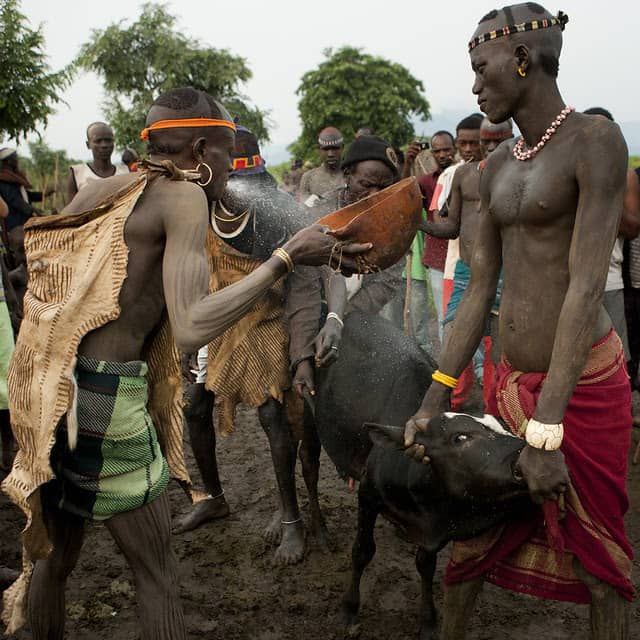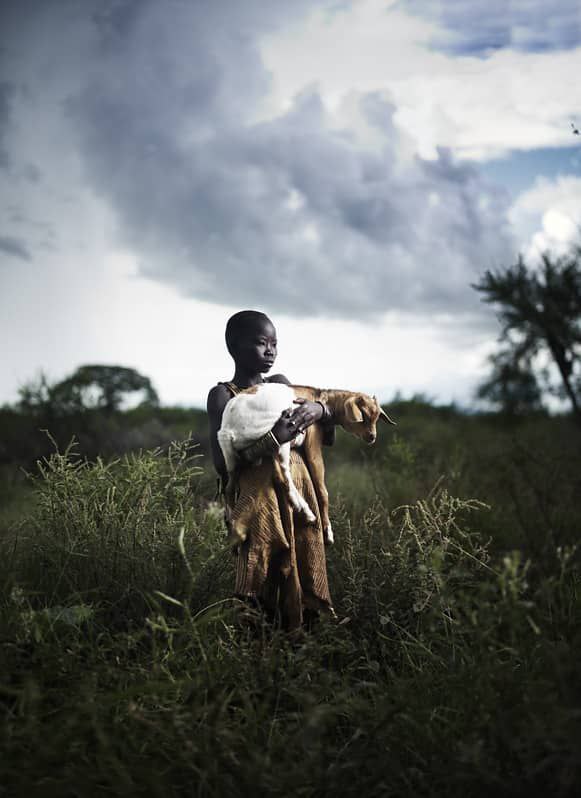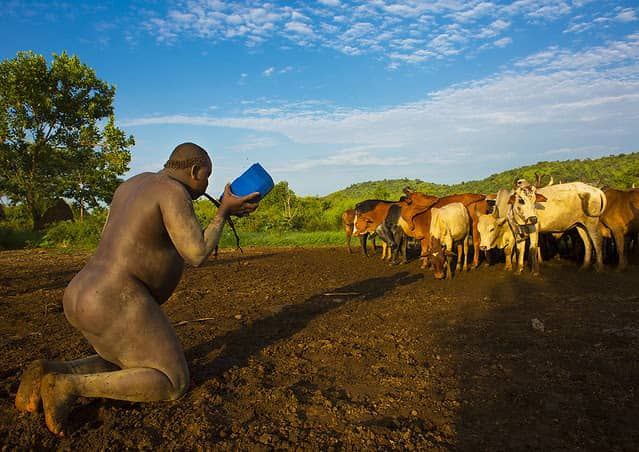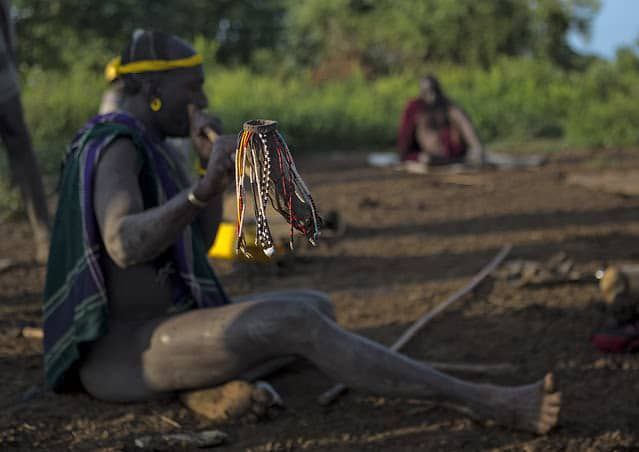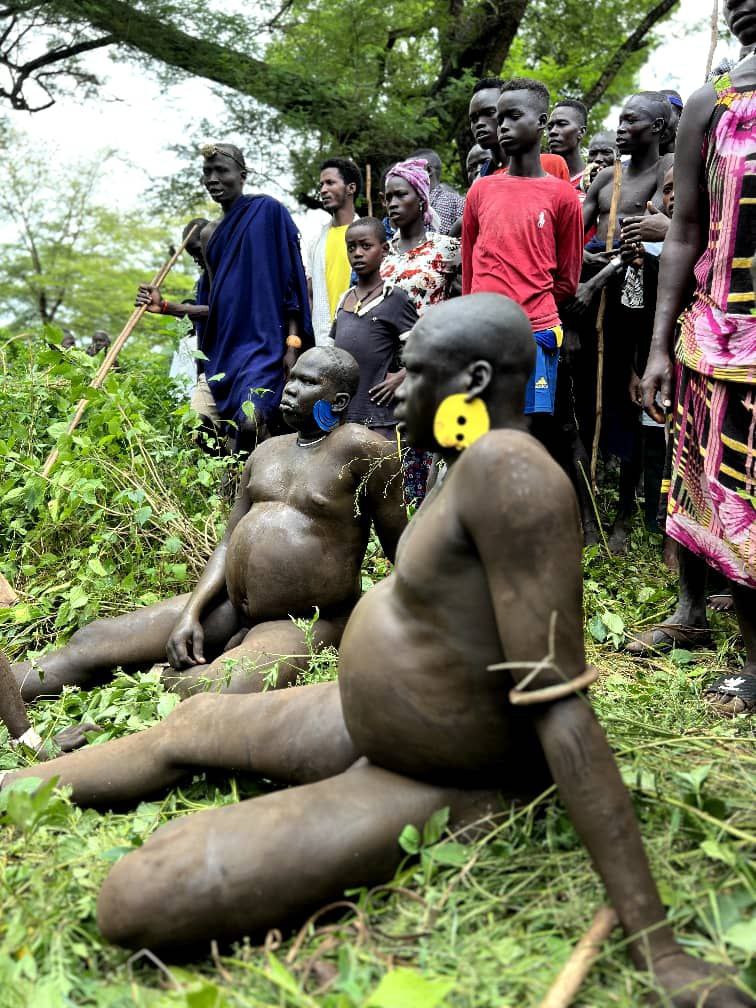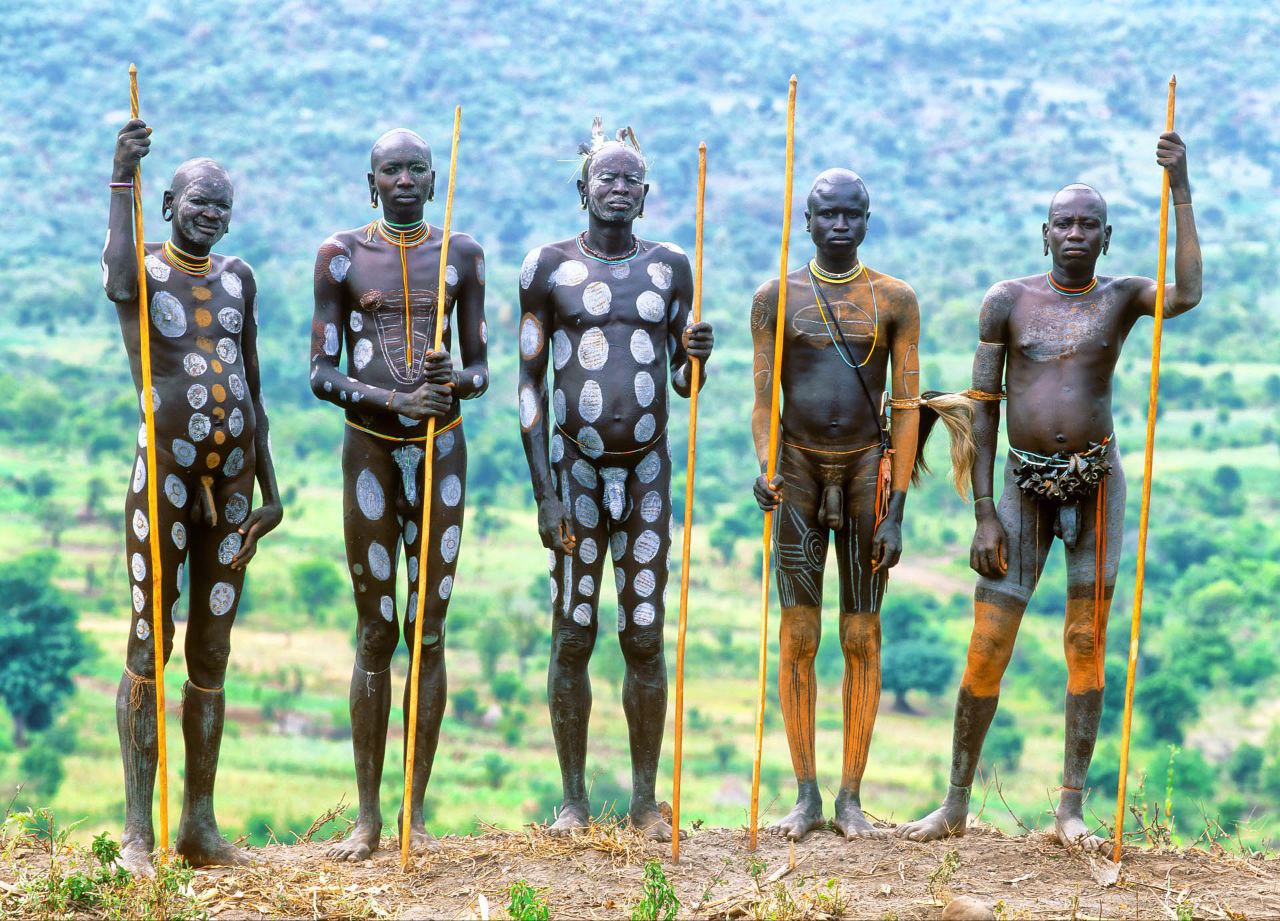10 Days 9 Nights
Ethiopia
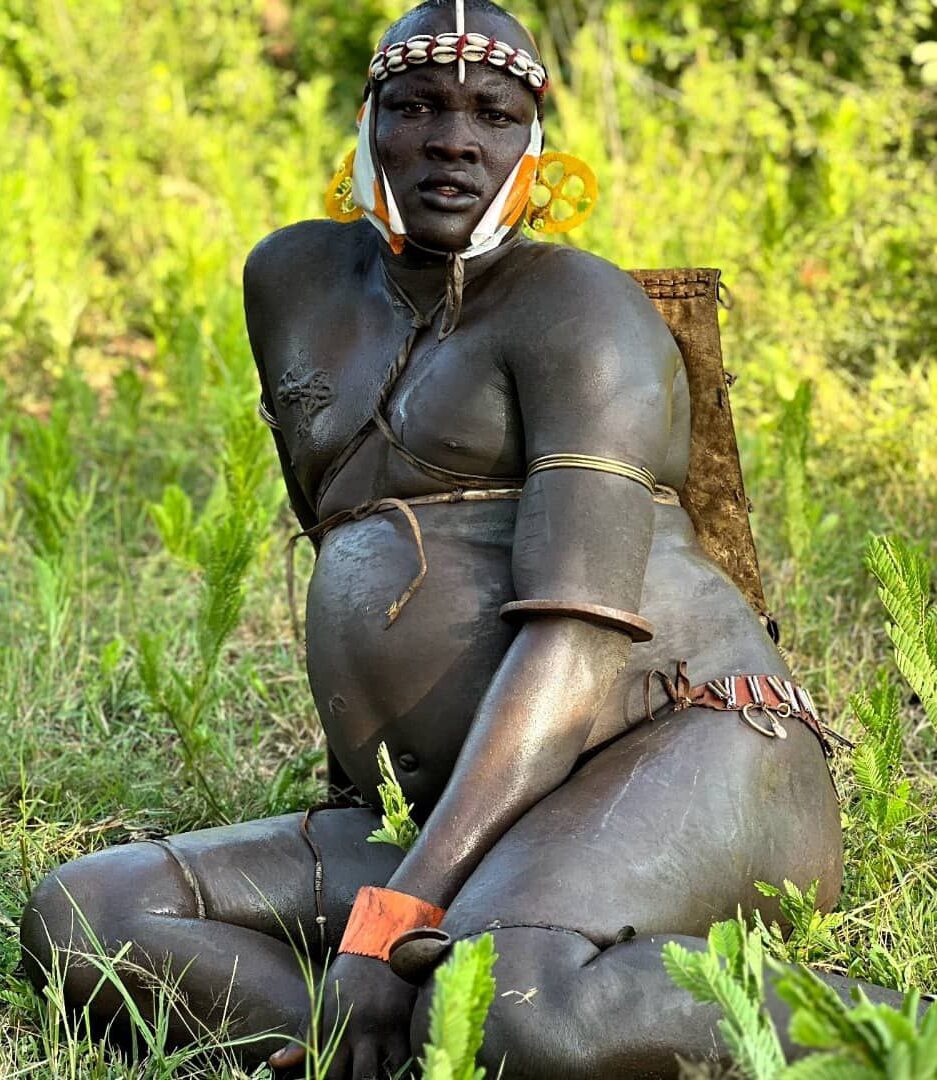
10 Day 9 Nights Photography Tour to Omo Valley
Day: One
Route: Arrival – Addis Ababa –flight to Jinka
Up on arrival i will meet in side Bole International Airport terminal and we will transfer to domestic terminal to fly to Jinka. Up on our arrival our driver will pick us to our hotel for check in and lunch. Then we continue driving to visit the mursi tribes and their village. The Mursi Tribes live in the Lower Omo Valley of southwestern Ethiopia and number less than 10,000. Their territory of around 2,000 km2 lies in the South Omo Zone of the Southern Nations, Nationalities and Peoples’ Regional State (SNNPRS), roughly between the Rivers Omo and Mago.
They have two distinctive features of their society by which they have become known to outsiders, are ceremonial duelling (sagine) and the large pottery discs or ‘plates’ (debhinya) which are worn by women in their lower lips.
Dueling is a form of martial art, in which teams of men from different local divisions of the population (bhuranyoga) fight each other with two-metre wooden poles (dongen) in short but fierce bouts. The lip-plate is an expression of female social adulthood. A girl will have her lip pierced by her mother, or another woman of her local community, when she reaches the age of around fifteen. After we visited these tribes then we will drive back to Jinka for dinner and overnight. In the afternoon we will enjoy our leisure time.
Day: Two
Route: Jinka- Erbore – Hammer Village
In the morning after breakfast 8:00am we check out hotel then drive to Erbore. Lunch will be at chosen place. On your way we will visit the Arbore tribes.
The Arbore, also known as Erbore or Ulde, is an ethnic group living in southern Ethiopia, near Lake Chew Bahir. They are from the Omotic language family and have ancestral links to the Konso People. With a total population of 6850, the Abore population is divided into just four villages.
The Erbore tribe women are absolutely stunning; with extremely dark skin and strong features. Prior to marriage the women have their heads shaved. They wear dark robes, colorful beads and their huts are constructed of tree branche s and reeds.The Arbore, also known as Erbore or Ulde, is an ethnic group living in southern Ethiopia, near Lake Chew Bahir. They are from the Omotic language family and have ancestral links to the Konso People. With a total population of 6850, the Abore population is divided into just four villages. After we spent a reasonable time we will drive Turmi up on arrival check in to hotel for dinner and overnight.
Day: Three
Route: Turmi – Dassanach – Hammar Village -turmi
Early in the morning after breakfast we will drive to Dassanach and Hamar Tribes. . We will then take the local wooden boat in order to cross the Omo River and meet the Dassanech people one of their local village.
The Dassanech tribes are known for their very interesting house design and body painting. So we will spend some times visiting the village and experiencing a village life style of these authentic Dassanech people after spending reasonable time we drive back to Turmi to have lunch
Afternoon we walk to nearby Hamer village and tribes. The Hammer fine looking people taking great pride in their appearance – the women, with their red dyed plaited hair wear leather skirts decorated with shells, are beautiful.
Each Hamer village is amazingly still free from western influences and non-organic materials.
Their homes are constructed entirely of local materials, mud, wood and thatch.
Each village consists of a single extended family unit of approximately 10-15 huts in close proximity around which daily life rotates.We can spend test of the day with Hammer tribe.
Eating traditional food and drinking traditional coffee and drawing water with a pump, join to agriculture. You can wear cloth same like they wear if you want. Overnight and dinner will be in Turmi in a lodge
Day: Four
Route; Turmi-Karo- Gnagatom – Camping at Gnagatom
After breakfast you will start excursion to visit Karo and GnagatomTribes. The Karo, or Kara, are a Nilotic ethnic group in Ethiopia famous for their body painting. They are also one of the smallest tribes in the region with an estimated population of 1.000-1.200 people. They are closely related to their neighbors, Hamer and Banna, with a lexical similarity of 81%. They have had the same culture and traditions for 500 years, like traditional dancing and painting their bodies with a mix of ash and fat or water.
The Karo people differentiate themselves from many of the neighboring tribes by excelling specifically in body and face painting. They paint themselves daily with colored ochre, white chalk, yellow mineral rock, charcoal, and pulverized iron ore, all natural resources local to the area. The specific designs drawn on their bodies can change daily and vary in content, ranging from simple stars or lines to animal motifs, such as guinea fowl plumage, or to the most popular – a myriad of handprints covering the torso and legs. Both the Karo and the Hamar men use clay to construct elaborate hairstyles and headdresses for themselves, signifying status, beauty, and bravery. Dinner and Overnight Camping at Gnagatom
Day: Five
Route; Gnagatom Tribes -Surma- Camping at Surma
After breakfast we will start excursion to visit Gnagatom Tribes. There are two distinct groups within the Nyangatom tribe; the eastern group near the banks of the Omo River who have developed agricultural systems and permanent settlements, and the western group near the Kibish Basin who focus mainly on herding, although some cultivation is also carried out. The population of this tribe in total is roughly 7,000.
Both groups of the Nyangatom are related to the Topossa people in Sudan and their proximity to the Sudanese border has made it relatively easy for the Nyangatom to acquire arms, which are used as status symbols and in conflicts with neighboring tribes. They celebrate the success of warriors with a ceremonial sacrifice of goats and the deliberate scarring of skin.
As with most Omo Valley tribes, clothing and ornamentation holds important cultural value. For women, social status is displayed in the number and colour of beaded necklaces they wear, with girls being given their first necklace by their fathers and then adding new ones every year, which are never taken off. Unmarried women wear goatskin skirts with bright beads, whilst married women’s skirts are less bright and not embroidered. For men, sharp metal rings and bracelets with filed edges are worn for use as defensive weapons, and scarring signifies their achievements as warriors. Overnight and dinner camping at Surma
Day: Six
Route; Full day Surma village
In the morning we will have breakfast at our camp site and will drive to villages to visit the surma tribes.The Surma, “Suri” is the self-name of a little-known group of agro-pastorals/cultivators straddling the borderland of southwestern Ethiopia and Sudan. They show some historical and cultural affinities with the Nilotic peoples in neighboring Sudan; they are also related to the Ethiopian Mursi and especially the Me’en, other “tribal” groups in this area. The Suri are composed of three subgroups; the Chai and Tirma (very closely related).The Suri live in a remote, part of Maji and Bero-Shasha provinces in the Kefa region of Ethiopia.The Tirma and Chai are typical lowland dwellers whose settlements are all below 1,000 meters, in a semiarid area along one perennial river, the Kibish. Their present habitat lies between 5°10′ and 6°00 N and 35°20′ and 34°10′ E. Lunch will be pick nick at chosen place. In the afternoon drive back to camp site for overnight and dinner.
Day: Seven
Route; Full day Surma village
In the morning we will have breakfast at our camp site and will drive to another villages to visit the surma tribes.The Surma, “Suri” is the self-name of a little-known group of agro-pastorals/cultivators straddling the borderland of southwestern Ethiopia and Sudan. They show some historical and cultural affinities with the Nilotic peoples in neighboring Sudan; they are also related to the Ethiopian Mursi and especially the Me’en, other “tribal” groups in this area. The Suri are composed of three subgroups; the Chai and Tirma (very closely related).The Suri live in a remote, part of Maji and Bero-Shasha provinces in the Kefa region of Ethiopia.The Tirma and Chai are typical lowland dwellers whose settlements are all below 1,000 meters, in a semiarid area along one perennial river, the Kibish. Their present habitat lies between 5°10′ and 6°00 N and 35°20′ and 34°10′ E. Lunch will be pick nick at chosen place. In the afternoon drive back to camp site for overnight and dinner
Day Eight:
Route: Surma village to Mizan Teferi
Early in the morning after breakfast at our camp site we will drive to Mizan Teferi. En route we will visit some more villages, coffee plantation. The largest coffee plantation in the country is in Bebeka near Mizan Teferi.
Another plantation is found in neighbouring Tepi but in Wushwush the tea is grown widely. The Bonga rainforest of approximately 500km² covers the surrounding hills and hides a real wealth of natural treasures: wild coffee and cardamom, wild pepper flourish here, and bee keepers get honey here. Hot springs bubble up from the ground and waterfalls pour over steep cliffs, giant eucalyptus trees grow in the forests. Here you can meet countless monkeys and other wild animals and many until now undocumented birds await discovery. Lunch will be at chosen place. Finally drive to Mizan Teferi for overnight and dinner
Day Nine:
Route: Mizan Teferi – Bonga – Jimma
In the morning check out from hotel and eat breakfast to start driving to Bonga and Jimma. Bonga is a name rarely encountered when visiting Ethiopia, if at all. But it deserves to be better known: it’s said to be the very birthplace of Arabica coffee.The term coffee is said to derive from Kaffa, the ancient name for the part of the present-day Southern Nations, Nationalities and Peoples’ State region in which Bonga lies.
The story goes that sometime around the sixth century in forests near Bonga, a goatherd named Kaldi spotted his animals getting frisky after eating red berries from a shrub he’d never seen before. So Kaldi gave the berries a try himself and the coffee bean was discovered. Lunch will be at chosen place. Finally in the afternoon drive to Jimma for overnight and dinner.
. Day Ten:
Route: Drive from from Jimma to Addis Ababa
Early in the morning after breakfast we will check out from your hotel and start driving to Addis Ababa. We will have lunch at chosen place. Up on arrival possibly we will visit National Museum (where the fossil of Lucy housed). In the afternoon you will visit Merkato (the largest open air market in Africa), Shoro Meda (market place for Ethiopian traditional clothes) and Mount Entoto Park. In the evening up on your arrival you will have a fare well dinner at one of popular traditional Restaurant in Addis Ababa. Finally transfer to airport to fly back home.
End of the Tour
Ethiopia is your home. Well come back again
This Trip will cost you total $XXX per person
Prices Included:
- Ground transportation coaster bus
- Experienced driver, driver allowance
- All fuel expenses and Lubricants Expense
- Professional and local guide throughout the entire trip
- Room Standard Hotel, Camping,
- All Meals (Breakfast, Lunch, Dinner with water unlimited)
- Cook prediem
- Securities and scouts perdiem
- All entrance fees, photography fee, videos fee, free WiFi.Prices Not included:
- Domestic flight
- Snacks
- Personal expenses.
Please select date
from Free

